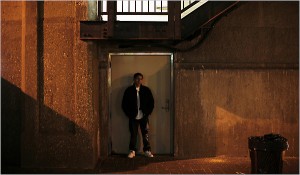 The New York Times just ran an interesting story that offers a nice follow-up to the numbers Chris posted on victimization in juvenile facilities. The story, “A Glimpse Inside a Troubled Youth Prison,” tells about the experiences of a young man named Edwin during his incarceration in a juvenile prison. By Edwin’s account, he “feared for his safety, received little counseling and left no better prepared for life outside than when he arrived there.”
The New York Times just ran an interesting story that offers a nice follow-up to the numbers Chris posted on victimization in juvenile facilities. The story, “A Glimpse Inside a Troubled Youth Prison,” tells about the experiences of a young man named Edwin during his incarceration in a juvenile prison. By Edwin’s account, he “feared for his safety, received little counseling and left no better prepared for life outside than when he arrived there.”
The story relates many problems: the constant threat of violence – particularly for young and vulnerable inmates; inadequate health care and counseling; over-medication of youth; and issues stemming from a volatile young staff. Edwin also points out that he was a difficult “client” of the juvenile system, but he did manage to develop close relationships with individual staff members. In the end, the story reports that Edwin doesn’t blame the institution – he never expected much in the first place. At age 18, he is now trying to build a life on the outside; he earned his GED and is considering college.
Much of my research has dealt with life inside juvenile prisons and this short news story is a good introduction to many of the issues facing administrators, staff, incarcerated youth, and concerned community members. The commissioner of the agency that runs New York’s juvenile prisons is quick to acknowledge the problems; she is quoted in the story as saying: “Unfortunately, that is the experience of many young people in the system…I have absolutely no reason to question his individual experience. They deserve better…(Edwin) makes my case for transformation of the juvenile justice system. He makes my case for why we need change.”
So the case for transformation is made in a very public forum. But, the administrator’s statement raises more questions than answers: what might this transformation look like and when might it take place? Can we expect significant changes in the near future? And, finally, how will the agency be accountable to the public(s) it serves?

